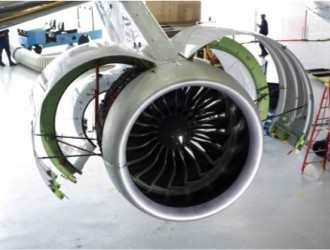The U.S. Defense Department’s recent outreach to Silicon Valley for access to commercial innovation is understandable. Secretary Ash Carter’s determination to access innovative technology is laudable. However, the crux of the issue is not better access to innovation but less burdensome acquisition of innovation.
The Pentagon has had access to the world’s leading commercial innovation since the mid-1990s, when Congress passed the Federal Acquisition Streamlining Act (FASA). Subsequently, Federal Acquisition Regulation (FAR) Part 12 created a Defense Department acquisition framework that recognizes the value of commercial investment and technology for military application.
These reforms enabled Rockwell Collins to eliminate redundancies between our commercial and military business units. For example, by starting with commercially developed products, Rockwell Collins saved the Pentagon more than $160 million in the development of the Common Avionics Architecture System that was incorporated on the H-60 and CH-47 Chinook helicopter fleets. And our state-of-the-art cockpit displays developed commercially for the Boeing 787 were subsequently modified for military use on the KC-46 tanker.
This was good news. The problem, however, is that military acquisition of commercial innovation is increasingly challenging, and this is an industry-wide issue. In 2014, a Defense Business Board report said the entire industry’s ability to provide the military with leading-edge commercial technology is under increasing threat.
Here’s why. FAR Part 12 states that as long as a product is “of a type” that is currently commercial, then the Pentagon must classify the product as commercial. The military version of the commercial product can be designed a little differently, but if it is “of a type”—or similar—then it is a commercial product under FAR Part 12 regulations. This distinction is very important, because few commercial items can be used by the military as-is, with no modification for their specific needs.

Everything works well as long as the military item is classified as commercial. But when products are classified as military items—and excluded from FAR Part 12—the manufacturer is subject to overly burdensome cost-based accounting, and the government is responsible to pay for items such as obsolescence management and the addition of ongoing, commercially developed innovation in that product.
In essence, this separates the military’s product from the commercial item and often requires the addition of a distinct, low-volume production line for a special customer. This limits the manufacturer’s ability to generate a return on R&D investments of tens or hundreds of millions of dollars.
How many commercial companies would view this as an attractive business proposition? It would be a dispiriting and needless loss if the independent and entrepreneurial personalities that founded Silicon Valley startups were to conclude that working with the Defense Department comes with too narrow an interpretation of what a commercial item is.
To that point, the Senate Armed Services Committee’s report for the defense authorization for fiscal 2017 clearly sums up the committee’s unease regarding the Pentagon’s approach to commercial products: “The committee is concerned about the Department of Defense’s increasingly narrow interpretation of the definition of commercial items . . . . If there is a problem with the definition, it appears to be the Department’s repeated attempts to narrow the definition to conform to an oversight strategy that will inadvertently lead to less competition [and] increased costs.”
Until these concerns are addressed, the Pentagon will face ongoing challenges with acquiring commercial industry innovation in an efficient and cost-effective manner—whether that innovation comes from Silicon Valley or Cedar Rapids, Iowa.
However, there are steps the Defense Department can take to ensure its outreach to commercial industry is a success:
•Regulations. Recognize the congressional intent of the broad definition of a commercial item—particularly commercial “of a type” products and the fact that prior commercial determinations should be allowed to carry forward.
•Training. Train the acquisition workforce in the meaning, importance and congressional intent of the FASA and FAR Part 12.
•Intellectual property. Protect intellectual property (IP) aggressively. The current acquisition environment is creating barriers to the acquisition of commercial technologies, as companies invest, take significant risk to develop products and then are made to give away their valuable IP to competitors.
•Value. Shift the discussion away from restricting commercial profit and focus on the value received. When the Pentagon buys commercial items, it benefits from sunk R&D costs, ongoing obsolescence management, technology insertion and further R&D expenditures, which are managed by the commercial company as a part of its business model. Companies and their shareowners deserve a return on this investment.
Despite the need for the Pentagon to do more, it is important to recognize that we are all working toward the same national goals—to provide the best product at the best value for the taxpayer. This dedication helps to ensure that our uniformed men and women will always have the most innovative, leading-edge technology to defend the freedoms we cherish.
Philip J. Jasper is executive vice president and chief operating officer for government systems at Rockwell Collins.
Editor's Note: The photo caption was edited to clarify the derivation of the Common Avionics Architecture System displays.





